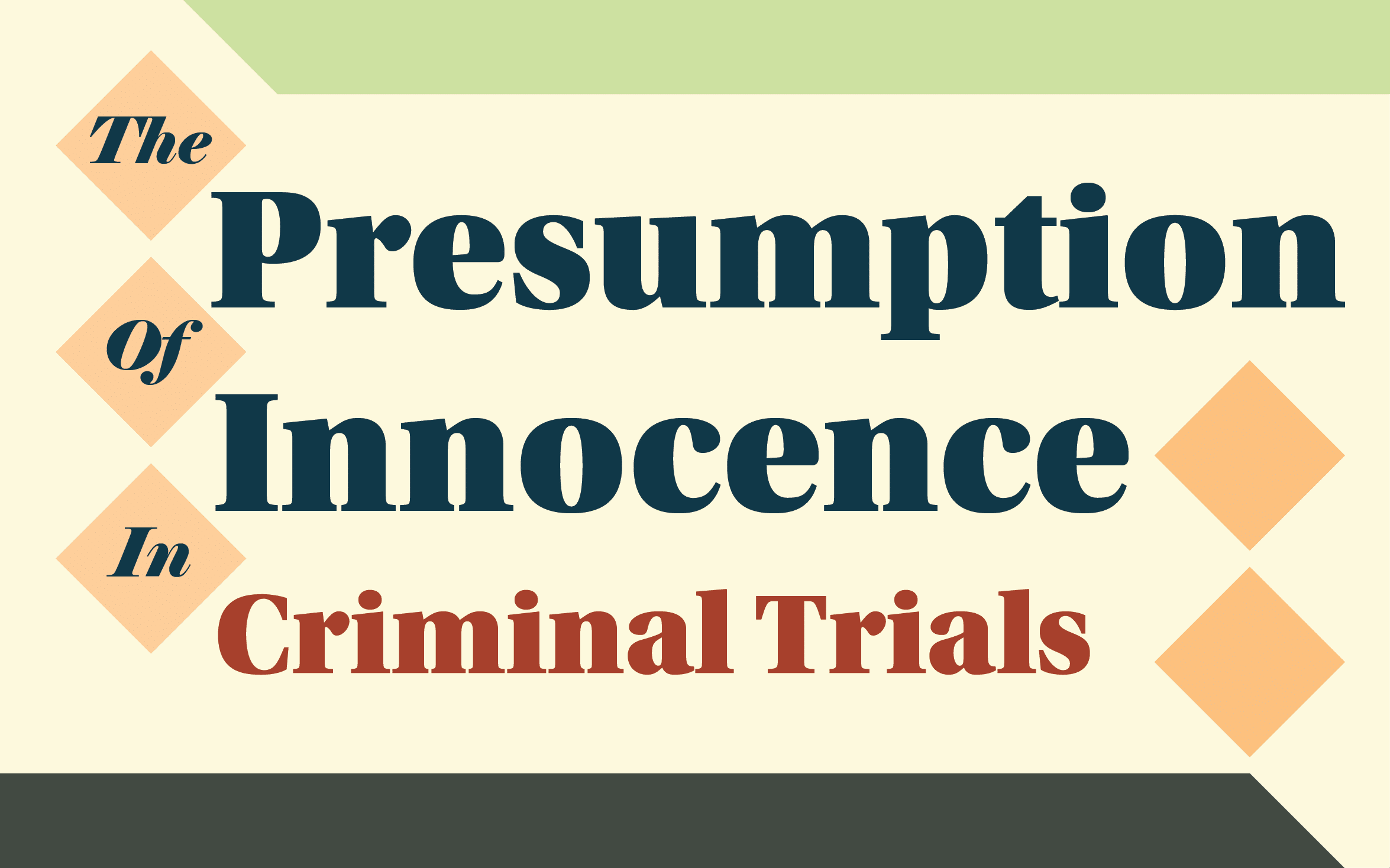Burden and Standard of Proof
The burden of proof, also known as the onus of proof, refers to the duty of the prosecution to successfully prove the accused’s guilt in order to produce a guilty verdict – the defence is not required to prove the accused’s innocence, only to disprove the prosecution’s assertions.
In a sense, the prosecution must present arguments and evidence that are compelling enough to ‘tip the scales’ against the accused’s presumption of innocence

One of the key directions given to juries in criminal trials across Australia is to remind them of the accused’s right to be presumed innocent of the charge, and only to be convicted if the jury has been persuaded “beyond a reasonable doubt”.
However, uncertainty often arises as to how high the threshold of a ‘reasonable doubt’ exists.
In our system, the prosecution is not required to prove the guilt of the accused “beyond any possible doubt”. Raising the standard of proof to that level would make it nearly impossible to secure a conviction, and would prevent society from being able to police criminal behaviour. On the other hand, if the standard of proof is insufficient, false punishments would be unavoidable, thereby contradicting the very values of the rule of law.
So, the question is, what is that particular “reasonable” standard? According to the High Court’s decision in Green v R (1971):
“A reasonable doubt is a doubt which the particular jury entertain in the circumstances. Jurymen themselves set the standard of what is reasonable in the circumstances.”
Visit our page below to learn more about the standard of proof and the definition of a ‘reasonable doubt’.
The Presumption of Innocence
The presumption of innocence is one of the most critical principles of the rule of law, and is a major pillar of human rights in Australia. Simply put, it is the notion that all people are considered innocent until proven guilty, and should be treated as such under the law.
The presumption is usually expressed in relation to a charge of a criminal offence. For instance, the website of the Federal Attorney General describes the presumption as imposing on the prosecution the burden of proving the charge and guarantees that no guilt can be presumed until the charge has been proved beyond reasonable doubt. However, the expression has a much wider understood meaning in Australia as applying to any assertion made, and requiring the person, the subject of the assertion, to be presumed innocent unless the maker of the assertion establishes the assertion as correct.
The Rule of Law Education Centre values the presumption of innocence with the utmost regard, and has produced extensive educational material about it. You can access our presumption of innocence page below, as well as our basic explainer video on the right:
The Media
Australian courts have a system of open justice, in which the media and members of the public are welcome to enter courtrooms and follow court proceedings. This improves the public’s understanding of, and participation in, the debate about important issues relevant to our society and leads to greater accountability and transparency. It also fosters the public’s trust and confidence in the Australian judiciary.
Generally, the media should not publish information that is likely to interfere with the administration of justice. Courts take this kind of contempt very seriously. However, the line is not always clear as to where responsible journalism ends and the potential for irresponsible or prejudiced publication begins. Historically, there have been a number of high-profile Australian cases which have generated an atmosphere of public hysteria, akin to a ‘lynch mob’. In these cases, the media threatens the accused’s right to a fair trial by exposing the judiciary to prejudiced views, jeapordising the impartiality of the judicial process and by extension, the accused’s presumption of innocence.
Therefore, media organisations must ensure they are responsibly reporting on criminal trials, to ensure they are not breaching any legal obligations, interfering with the judiciary’s impartiality, or stirring public hysteria.
Relevant Case Studies
The Skaf Brothers
The criminal trial process underwent by brothers Bilal and Mohammed Skaf highlight the importance of
- affording the accused presumption of innocence,
- a fair and prompt trial process, and
- applying the law equally and fairly
Keli Lane
This case note provides a review of the judgements passed on the trial of Keli Lane, and will demonstrate that even in high profile cases that attract intense media scrutiny, the standard of proof remains essential to uphold.
The Claremont Killings
Between 1996 and 1997, three young women were murdered in a popular night spot in Claremont, WA. This case reinforces just how high the threshold of “beyond reasonable doubt” actually is and confirms the standard of proof must be satisfied in whole before a guilty verdict can be passed.






